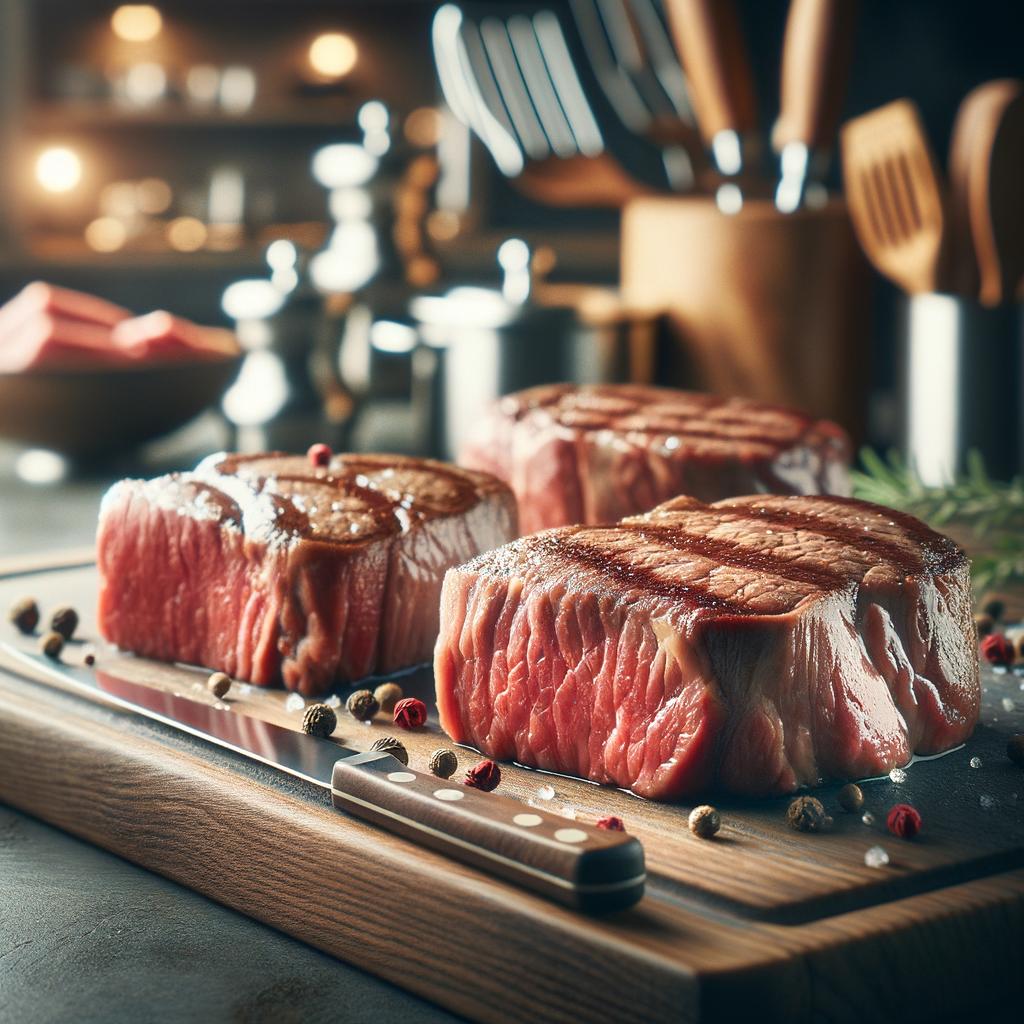Beef Steaks

Description
Beef steak, a beloved culinary staple, is a cut of meat sliced perpendicular to the muscle fibers, potentially including a bone. Its appearance is rich and inviting, with a deep red hue that turns into a succulent brown when cooked. The texture varies depending on the cut, ranging from tender fillets to chewy rumps, but it's always satisfyingly meaty. The flavor profile of beef steak is robust and hearty, with a depth that's enhanced by marbling - the streaks of fat interspersed with the lean meat. This marbling is a unique characteristic of beef steak, setting it apart from other meats, and it's responsible for the juiciness and flavor that steak lovers crave.
Primary Uses
Beef steak is a versatile ingredient that stars in a multitude of dishes across various cuisines. It's the centerpiece of a classic American steakhouse meal, often served with potatoes and vegetables. In France, it's used in 'Steak au Poivre', a dish featuring a pepper-crusted steak with a creamy sauce. Japanese cuisine presents steak in a Teppanyaki style, cooked on an iron griddle. Beyond the culinary world, beef steak plays a role in certain cultural practices, such as the Argentine 'asado', a social event centered around a barbecue.
History
The history of beef steak is as rich as its flavor. It dates back to prehistoric times when our ancestors first began cooking meat over fire. The term 'steak' comes from the Old Norse word 'steik', meaning meat on a stick. In the Middle Ages, the English held traditional 'beefsteak banquets', which evolved into the Beefsteak Clubs of the 18th and 19th centuries, gatherings of intellectuals and politicians. Over time, the popularity of beef steak has only grown, becoming a symbol of prosperity in the 20th century. There's a romantic notion associated with steak - it's often the choice for a celebratory meal or a candlelit dinner for two.
Nutritional Information
Beef steak is a powerhouse of nutrition. It's rich in high-quality protein, essential for muscle growth and repair. It also provides a wealth of vitamins and minerals, including iron, zinc, and B-vitamins, crucial for energy production and immune function. However, it's worth noting that the high saturated fat content, particularly in well-marbled cuts, can pose health risks if consumed excessively. Compared to other meats like chicken or fish, beef steak is higher in iron and zinc but also in saturated fats. As with everything, moderation is key. Enjoy your steak, but balance it with plenty of vegetables and whole grains for a well-rounded meal.

